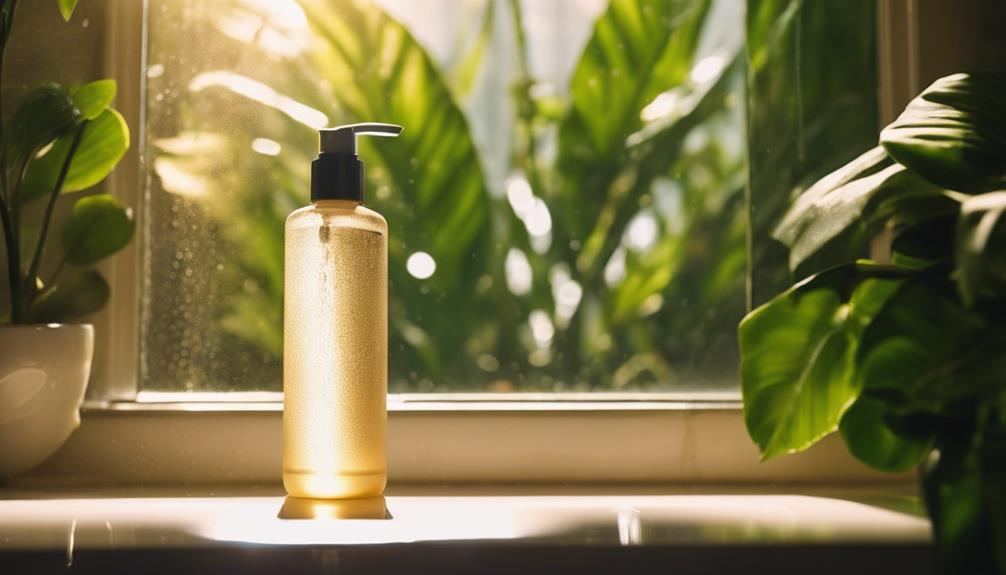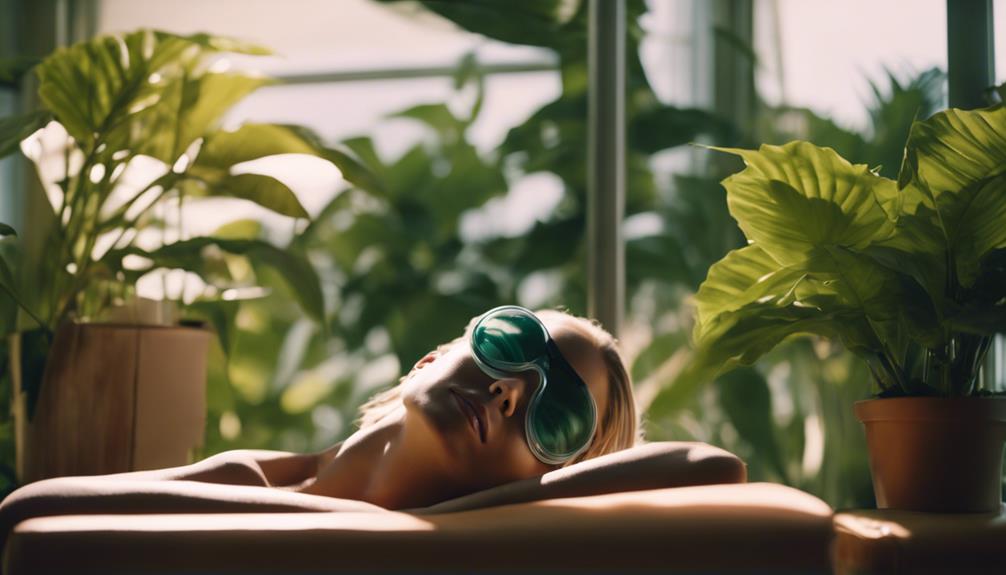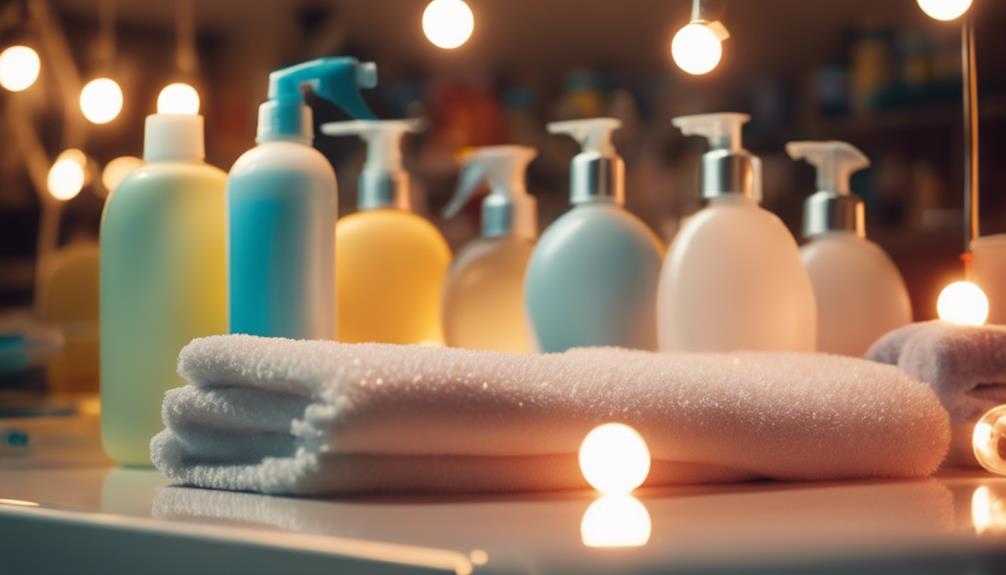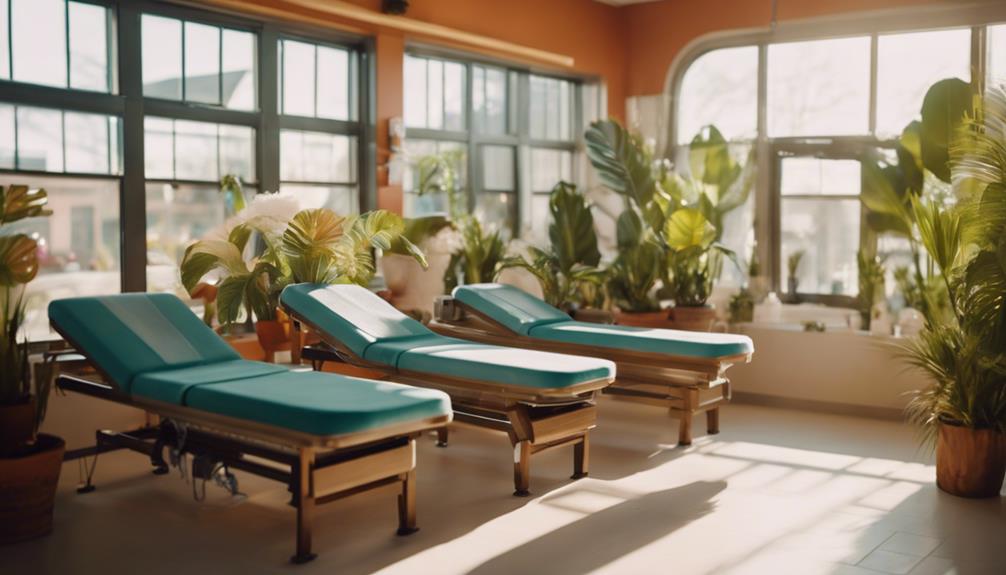Timing your shower is crucial for achieving the perfect tan. Once you have applied self-tanner, it is important to wait at least 4 to 8 hours before showering. This waiting period allows the product to properly bond with your skin’s amino acids, resulting in a deep and long-lasting color. Showering too soon can cause the tan to wash away. When it is time to shower, use lukewarm water and an oil-free body wash to preserve your tan. After showering, remember to gently pat your skin dry and moisturize daily for optimal results. Stay tuned for more tips on maintaining your glow!
Key Takeaways
- Wait at least 4 to 8 hours after self-tanning for optimal color development before showering.
- Shower with lukewarm water to prevent fading of your tan.
- Use an oil-free body wash to avoid harsh ingredients that can disrupt the tan.
- Gently pat your skin dry with a towel to maintain the tan's integrity.
Optimal Timing for Tan Development
Have you ever wondered how long you should wait before showering after applying self-tanner to achieve the finest results?
Ideally, you should wait between 4 to 8 hours for ideal tan development. A minimum of 2 hours is necessary, but extending your wait time can greatly enhance the richness of your tan.
When you give the self-tanner enough time to bond with your skin's amino acids, you'll guarantee a beautiful, lasting color. If you shower too soon, you risk washing away the desired results.
To maximize your tan, consider applying it overnight, and remember that clear water in the shower indicates your tan has set successfully. Waiting longer can also deepen your tan, so be patient for the best outcome.
Showering Guidelines for Tan Preservation
To preserve your tan effectively, wait at least 4 to 8 hours after application before stepping into the shower.
When you finally shower, opt for lukewarm water instead of hot, as the latter can fade your tan.
Use an oil-free body wash to avoid harsh ingredients that might strip your color.
It's vital to pat your skin dry gently with a towel instead of rubbing, which can disturb the tan's integrity.
Daily moisturizing is essential for maintaining your tan's appearance, so choose a quality lotion to keep your skin hydrated.
Following these guidelines guarantees your tan stays vibrant and lasts longer, giving you that sun-kissed glow you desire without unnecessary fading.
Post-Shower Skincare Tips
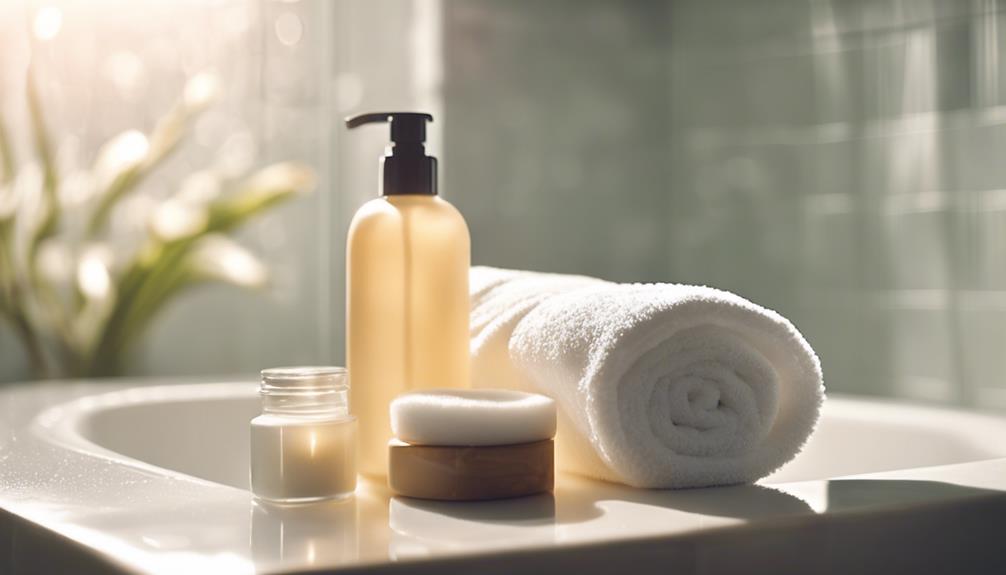
Once you've showered, it's important to gently pat your skin dry and hydrate with a suitable lotion to preserve the vibrancy of your tan.
Choose a moisturizer that's oil-free to avoid breaking down your tan. Apply it generously all over your body, focusing on drier areas like elbows and knees.
After moisturizing, wear loose clothing to prevent friction that could disrupt your tan. Avoid hot showers or baths in the following days, as they can fade your color faster.
Stick to lukewarm water and gentle, tan-friendly body washes. Ultimately, keep up with daily moisturizing to maintain your glow; consistency is key to a lasting, beautiful tan.
Your skin will thank you for the extra care!
Tan Maintenance and Troubleshooting
Maintaining your tan requires regular care and attention to prevent fading and unevenness.
To keep your facial tan looking fresh, wait 4-8 hours before washing it with a gentle, oil-free cleanser. If you notice streaks, use a damp washcloth to buff them away gently, and apply a cosmetic bronzer for a seamless look.
Daily moisturizing with an oil-free lotion is essential, especially for patchy areas. Exfoliating before your next tan application prevents uneven results.
If your tan appears too orange, a light body scrub can help tone it down. With these tips, you can troubleshoot common issues and maintain that gorgeous glow longer.
Stay consistent, and your tan will remain vibrant and even!
Common Questions About Tanning
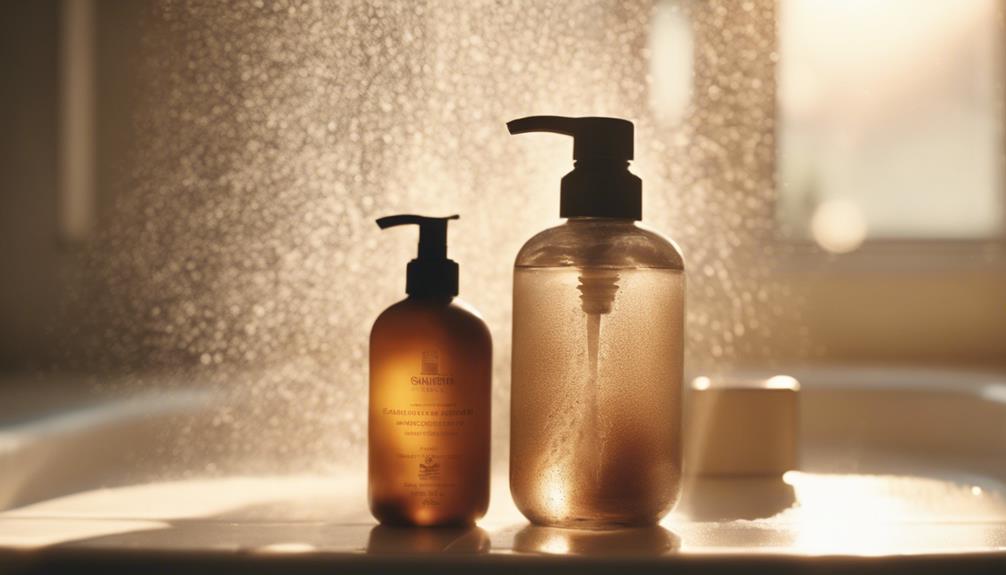
You might've some questions about tanning, especially after addressing common maintenance issues and how to keep your glow looking its best.
Here are a few frequently asked questions to clarify your tanning routine:
- When can I shower after self-tanning? Wait 4-8 hours before showering to allow for ideal development.
- How should I wash my tan off? Use lukewarm water with an oil-free body wash, and gently pat dry to maintain your tan.
Frequently Asked Questions
Can I Swim After Applying Fake Tan?
You shouldn't swim immediately after applying fake tan. Wait at least 4-8 hours for it to develop fully. Swimming too soon can wash away your tan, leaving you with uneven results. Patience pays off!
How Do I Remove Fake Tan Safely?
Removing fake tan's like peeling away a second skin. You can use gentle exfoliation with a scrub or mitt, combined with moisturizing products. Avoid harsh chemicals; they can irritate your skin and cause unevenness.
Is Fake Tan Safe for Sensitive Skin?
Yes, fake tan can be safe for sensitive skin if you choose gentle, hypoallergenic products. Always patch test first, follow application instructions carefully, and hydrate afterward to minimize irritation and enhance results.
Can I Apply Makeup After Self-Tanning?
You can apply makeup after self-tanning, but wait until your tan has fully developed. If you rush, the makeup may not adhere properly, leading to uneven results. Patience guarantees a flawless finish and lasting glow.
How Often Can I Reapply Fake Tan?
You can reapply fake tan every 4-7 days, depending on your skin type and desired intensity. Just guarantee your skin is properly exfoliated and moisturized before each application for an even, radiant finish.
How does the timing of my fake tan affect my shower routine?
The timing of your fake tan can impact your shower routine. If you shower too soon after applying the tanning product, it may not fully develop. It’s important to consider timing your tanning outfit to allow enough time for the product to set before showering to achieve the desired results.
Conclusion
So, there you have it! Timing your shower right is essential for that stunning sun-kissed glow.
By waiting a few hours and following the shower guidelines, you'll keep your tan looking fabulous.
Remember, a little patience goes a long way—after all, Rome wasn't built in a day!
With the right care, your tan will shine like the sun.
Now go rock that gorgeous glow with confidence!

